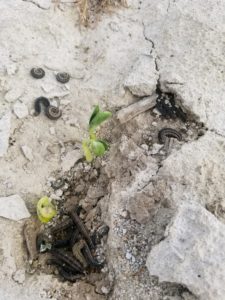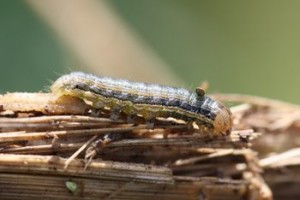Be alert for true armyworm infestations in wheat, and these larvae may also migrate into soybean, corn or other crops from adjacent wheat fields of grassy ditch banks. They might even be on weedy grasses or wheat or other grasses used in cover crops, and this could cause a problem if herbicides were applied at or after planting. Although true armyworms prefer grasses, when they go for a march or get stranded in fields, they will sometimes feed on soybean and cotton (and corn), and they may cut plants similar to a cutworm. The biggest issue is often on field edges.
For armyworms in wheat, use a treatment threshold of 6-8 larvae per square foot if plants are still in the milk stage. Once past the milk stage, wheat can tolerate higher populations and treatment is not usually recommended unless larvae are cutting wheat heads. Remember that larvae often fall to the ground when disturbed and hide under debris during the day, so you’ll need to look close. Synthetic pyrethroids at mid rates such Baythroid XL, Declare, Karate/Warrior, and Mustang Max are typically used with good effect.



